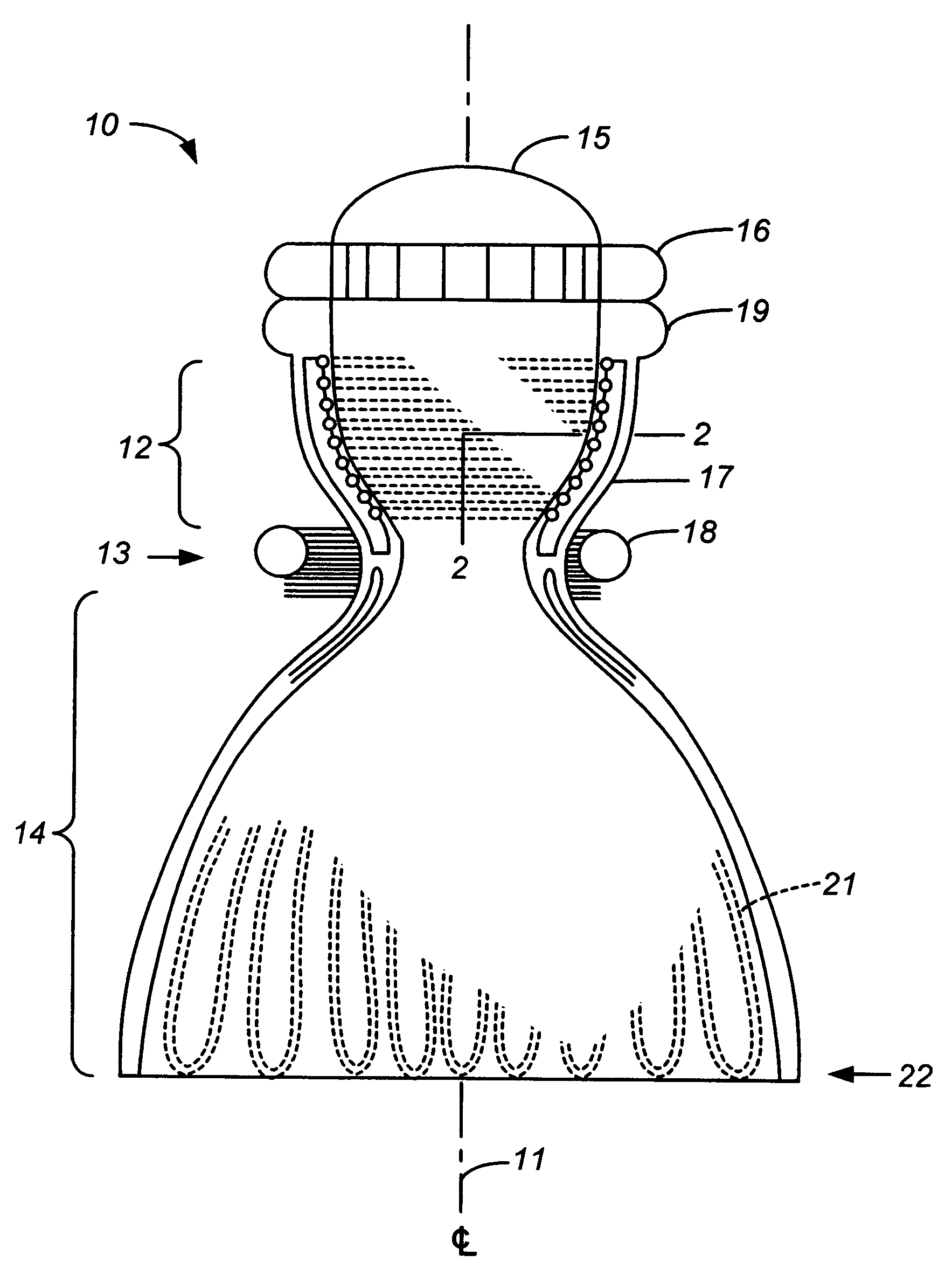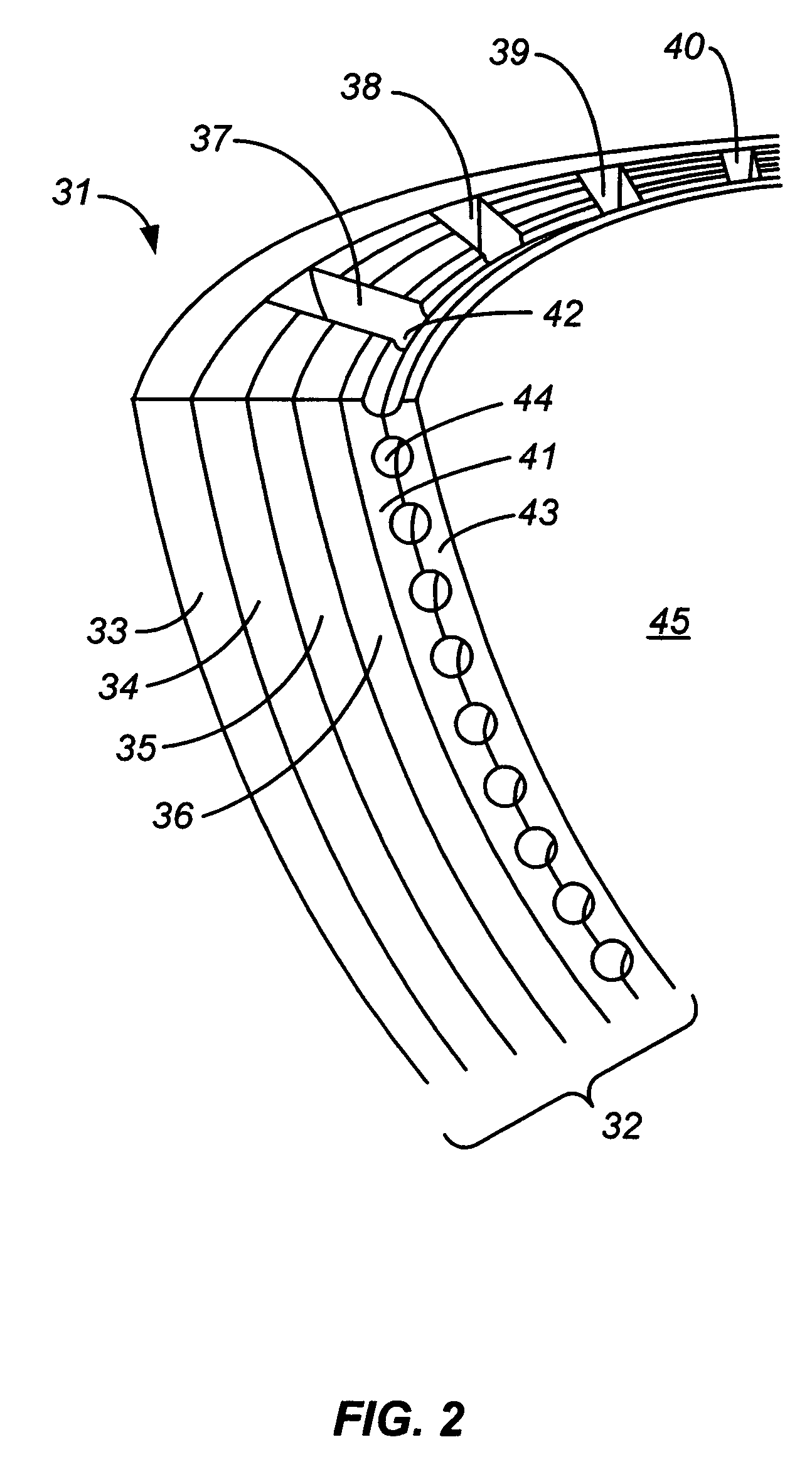Rocket engine chamber with layered internal wall channels
a technology of internal wall channels and rocket engines, which is applied in the direction of rocket engine plants, machines/engines, cosmonautic vehicles, etc., can solve the problems of limited heat transfer efficiency, inefficient use of coolant, and relatively high pressure drop of coolant through the channel, so as to achieve small cross section, reduce pressure drop in the inner channel, and reduce the effect of heat loss
- Summary
- Abstract
- Description
- Claims
- Application Information
AI Technical Summary
Benefits of technology
Problems solved by technology
Method used
Image
Examples
Embodiment Construction
[0019]As the summary above suggests, this invention is capable of implementation in a variety of ways. The invention and its scope can be readily understood however by a detailed examination of specific embodiments. One such embodiment is shown in the drawings and described below.
[0020]A chamber / throat / nozzle assembly that contains the features of the present invention is shown in cross section in FIG. 1. The chamber / nozzle assembly 10 is a body of revolution around a centerline 11 and the cross section is a plane that includes the centerline. The assembly 10 includes a convergent section or chamber 12, a throat 13, and a divergent section 14. Although the assembly is shown with a curved profile with a smoothly curved throat and a large nozzle (divergent section) relative to the chamber, the assembly may alternatively have the shape of two truncated cones both tapering toward and joined at the throat plane, with a sharp-angled throat, or with a chamber that is longer than the nozzle...
PUM
 Login to View More
Login to View More Abstract
Description
Claims
Application Information
 Login to View More
Login to View More - R&D
- Intellectual Property
- Life Sciences
- Materials
- Tech Scout
- Unparalleled Data Quality
- Higher Quality Content
- 60% Fewer Hallucinations
Browse by: Latest US Patents, China's latest patents, Technical Efficacy Thesaurus, Application Domain, Technology Topic, Popular Technical Reports.
© 2025 PatSnap. All rights reserved.Legal|Privacy policy|Modern Slavery Act Transparency Statement|Sitemap|About US| Contact US: help@patsnap.com



